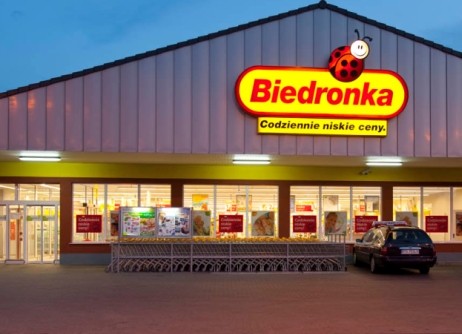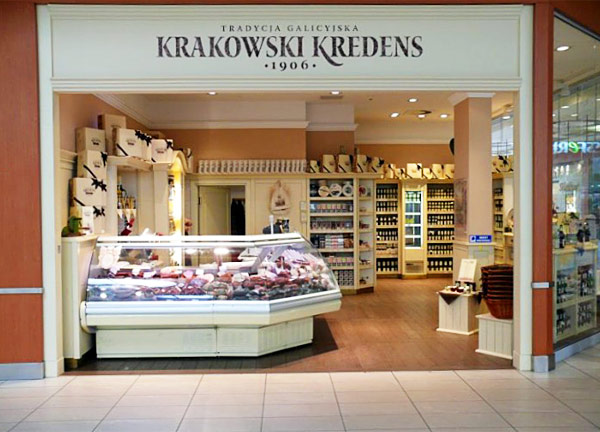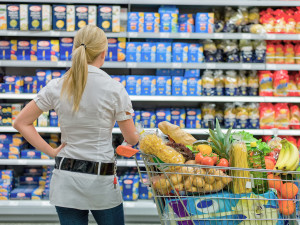The Year of the Consumer
Year 2014 was definitely the year of the consumer. Most retail networks not only expanded the range of products carried but also made shopping easier while keeping eye on competitive pricing. Threatened by the expansion of discount stores, supermarkets even lowered their prices.
One can also observe the evolution of attitudes among consumers who, encouraged by the low prices of basic products, increasingly purchased luxury goods, which only recently appeared regularly on shopping lists. French wines, Greek olives and Spanish ham are no longer rare delicacies bought only for grand occasions but products consumed regularly in many households.

Biedronka is the leader among Polish food chains
We analyse changes
Acquisitions and transformations
The Polish retail market remains one of the most fragmented in Europe. The market share captured by the biggest player, discount chain Biedronka, is only approximately 14%. The rest of the market is shared by large multinational chains (Carrefour, Auchan and Lidl among them) and various local companies. This makes the market extremely competitive.
The year 2014 passed without any spectacular transactions similar to the acquisition of Real by Auchan in the preceding year. Nevertheless, there was no shortage of important moves in the Polish retail market, indicating the on-going consolidation in the supermarket segment—not only among the larger chains. This process has been driven by smaller regional companies, which tend to merge with one another to form larger groups.
Regarding transactions in the capital market, the major event was the announcement made by the Małpka Express convenience store chain and the subsidiaries of the Forteam Investments Limited fund of a preliminary agreement for the sale of 100 per cent of Małpka S.A. shares valued at more than EUR 90 million signed in December.
We follow trends
Accelerating e-commerce
The total value of online sales of fast moving consumer goods in Poland is estimated to be EUR 120 million. Due to the rapid growth of this segment, this market is expected to be worth twice as much by 2018. Both the number of transactions and the average value of the basket are increasing rapidly (for Tesco, the average online basket is already 4–5 times larger than traditional shopping). However, the availability and increasing popularity of mobile applications can pose a challenge for many companies. Not all chains—far from it—have launched online shopping services.
We monitor the market
Leader losing momentum
The Biedronka chain, owned by the Portuguese Jeronimo Martins group, had more than 2,500 shops in 2014 and is expected to surpass the 3,000 mark by the end of 2015. However, with such rapid expansion, the national retail leader is appearing short of breath. For the first time since Biedronka’s launch in the Polish market, the company reported only single-digit sales growth—though in previous years it always exceeded 10 per cent. Worsening financial results and declining like-for-like sales confirm this trend.
However, Biedronka remains the unchallenged leader in the Polish retail market, with estimated 2014 sales of approximately EUR 7 billion. Auchan, the second-largest retailer in terms of sales, is unlikely to achieve even half of Biedronka’s sales, even once it completes the takeover of Real which began in 2013.

Advertising for the online shop Frisco.pl at a Warsaw underground station

Krakowski Kredens is a successful delicacies chain with over 50 stores across Poland
We notice opportunities
Convenient shopping
The classification of retail channels, which has been used for years in the food market in Poland, no longer reflects reality. Chains increasingly elude such classification. The boundaries between the various formats have become blurred over the years. This is most evident in the case of discount stores: none of the networks competes on price alone any more. Segment leaders, such as Biedronka and Lidl, have evolved towards the supermarket format by, for example, expanding their range or introducing their own premium brands. These discount stores are no longer associated exclusively with cheap products and can attract more affluent consumers.
Experts sum up developments
Low prices, wider range of products, better customer service
Poles are more aware of the choices available and know how to find a good bargain and when it is worth paying more for better quality—especially in the case of food. Poles also pay greater attention to retailers’ brands and look for inspiration, instead of merely one-stop shops where they can buy everything they need. In the coming years, the retail market in Poland will offer many opportunities for non-standard formats whose brand image and range of products are a good match with the needs and purchasing power of Polish consumers.




